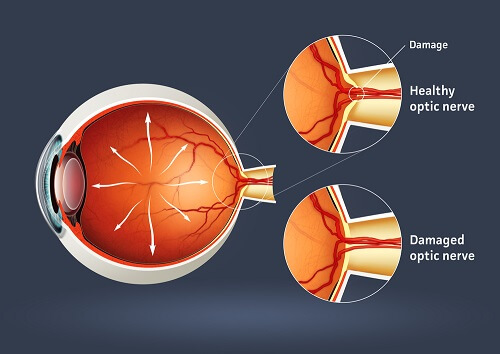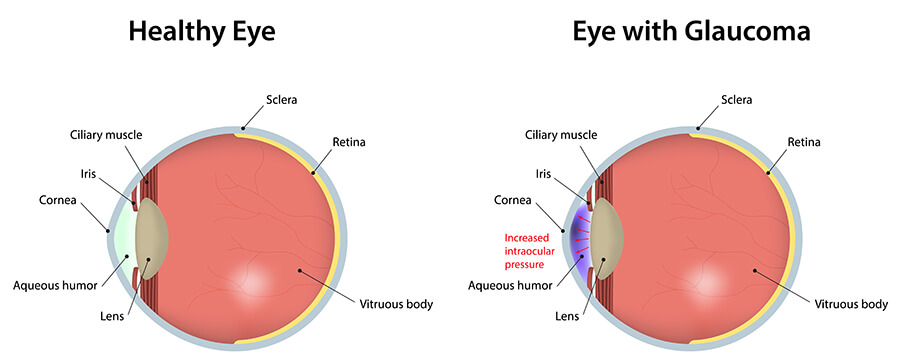Locate the most effective Glaucoma Service Near Me: Premier Eye Specialists
Locate the most effective Glaucoma Service Near Me: Premier Eye Specialists
Blog Article
Recognizing the Different Vision Modification Procedures Available for Clearer View
In the world of vision modification procedures, a wide variety of alternatives exist to resolve refractive errors and provide people with more clear view. From the widely acknowledged LASIK surgical treatment to much less intrusive treatments like PRK and implantable lenses, the field of ophthalmology supplies a series of methods tailored to fit various demands and preferences. Each treatment features its very own collection of factors to consider, benefits, and potential risks. Understanding the subtleties of these vision adjustment techniques is critical for making informed choices about one's visual health and wellness. Allow's check out the details of these treatments and shed light on the path to accomplishing improved vision clarity.
LASIK Surgical Treatment
LASIK surgical treatment is a typical refractive procedure utilized to fix vision issues such as astigmatism, farsightedness, and nearsightedness - eyecare near me. This surgical technique, which represents Laser-Assisted in Situ Keratomileusis, intends to improve the cornea to improve just how light is concentrated on the retina, ultimately boosting vision quality. Throughout the treatment, a slim flap is produced on the cornea, and a laser is used to get rid of precise amounts of cells to reshape it properly. This reshaping permits for light to be accurately concentrated onto the retina, correcting refractive mistakes.
One of the main advantages of LASIK surgical procedure is the quick improvement in vision experienced by patients. In general, LASIK surgical procedure is a popular choice for people looking for a long-lasting option for their vision issues.
PRK Procedure
While also a typical refractive treatment, the PRK (Photorefractive Keratectomy) technique differs from LASIK surgical procedure in its approach to fixing vision issues. In PRK, rather than creating a flap on the cornea, the outer layer of the cornea, called the epithelium, is totally removed. This enables the laser to improve the cornea to correct refractive errors such as farsightedness, nearsightedness, and astigmatism straight on the surface area.

Despite the longer recuperation time, PRK can generate excellent cause vision improvement, making it a valuable choice for those that might not be ideal candidates for LASIK surgical treatment.
Implantable Lenses
As opposed to PRK where the cornea is improved directly, implantable lenses use another approach for remedying vision by putting fabricated lenses inside the eye. This treatment is especially advantageous for people with high levels of farsightedness, nearsightedness, or astigmatism that may not be suitable prospects for laser surgeries like LASIK or PRK.
Implantable lenses, additionally recognized as phakic intraocular lenses, job by supplementing the eye's natural lens with an artificial one. refractive surgeries in al. These lenses can be placed in front of the all-natural lens (anterior chamber) or behind the iris and in front of the natural lens (posterior chamber) By readjusting the power and positioning of these lenses, ophthalmologists can successfully look here deal with refractive errors and enhance visual skill
One benefit of implantable lenses is that they are removable and exchangeable, providing versatility for future adjustments. Nevertheless, similar to any type of surgery, there are risks involved, such as infection or cataract development. Individuals taking into consideration implantable lenses should talk to an eye care expert to identify the most appropriate alternative based upon their individual needs and eye health.
Corneal Rings
Corneal rings, likewise referred to as intracorneal ring segments, are small, transparent devices placed right into the cornea to correct vision distortions such as keratoconus. Keratoconus is a condition where the cornea thins and protrudes exterior, creating vision resource to come to be altered. The insertion of corneal rings helps to flatten the cornea, improving aesthetic skill and reducing the uneven astigmatism triggered by keratoconus.
The procedure for putting corneal rings is minimally intrusive and reasonably fast, often done as an outpatient procedure. During the surgical treatment, the ophthalmologist makes a little cut in the cornea and inserts the rings at a particular deepness. Once in area, the rings aid to improve the cornea, providing a smoother surface area for light to go into the eye, which can result in more clear vision.
Corneal rings are considered a relatively easy to fix treatment, as they can be eliminated or changed if required. retina service near me. While they may not completely get rid of the need for glasses or contact lenses, corneal rings can substantially improve vision top quality and general aesthetic comfort for individuals with keratoconus or various other corneal irregularities
Refractive Lens Exchange
Following the modification of corneal irregularities with procedures like corneal rings, one more vision correction method that can attend to refractive errors is Refractive Lens Exchange (RLE) RLE is a medical procedure that involves changing the click over here now eye's natural lens with a man-made intraocular lens (IOL) to remedy refractive mistakes such as farsightedness, nearsightedness, and presbyopia. This treatment is specifically useful for individuals who might not appropriate prospects for procedures like LASIK or PRK because of variables such as thin corneas or high refractive mistakes.

Final Thought
In verdict, there are different vision correction procedures available to help people attain more clear view. LASIK surgical procedure, PRK treatment, implantable lenses, corneal rings, and refractive lens exchange are all options that can deal with different vision concerns.
In the realm of vision correction procedures, a plethora of alternatives exist to resolve refractive errors and provide individuals with more clear view.LASIK surgery is a common refractive procedure made use of to fix vision problems such as astigmatism, farsightedness, and nearsightedness.While likewise a typical refractive treatment, the PRK (Photorefractive Keratectomy) method differs from LASIK surgical procedure in its strategy to correcting vision troubles.Complying with the improvement of corneal irregularities with procedures like corneal rings, another vision adjustment strategy that can deal with refractive errors is Refractive Lens Exchange (RLE) LASIK surgery, PRK treatment, implantable lenses, corneal rings, and refractive lens exchange are all choices that can address various vision issues.
Report this page